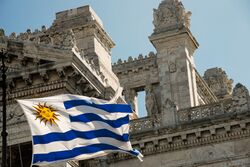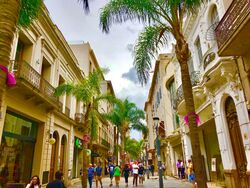See all articles relating to: Uruguay

Uruguay, officially known as the Oriental Republic of Uruguay, carries a rich history embedded with a struggle for independence, political upheaval, and cultural development. The country declared its independence from Brazil in 1825 after a prolonged conflict, known as the Cisplatine War, led by national hero General José Gervasio Artigas. Despite his initial efforts, Artigas was eventually exiled and the country fell under the rule of Fructuoso Rivera and then Manuel Oribe, marking the beginning of a long period of intermittent civil wars and political instability. In the 20th century, Uruguay made significant progress under the leadership of President José Batlle y Ordóñez, whose radical reforms in the early 1900s paved the way for a welfare state. Batlle y Ordóñez is often credited with shaping modern Uruguay by establishing policies for labor rights, social security, and public education.
The subdivisions of Uruguay
Uruguay is divided into 19 subdivisions:
Uruguayan history
See:
Uruguayan geography
See:
Researching family history in Uruguay
See also:
- Uruguayan genealogy
- Uruguayan immigration
- Uruguayan emigration
- Uruguayan archives
- Vital records in Uruguay
- Birth records in Uruguay
- Death records in Uruguay
- Marriage records in Uruguay
- Census records in Uruguay
- Civil registrations in Uruguay
- Church records in Uruguay
- Newspaper records in Uruguay
- Military records in Uruguay
Uruguay ethnicity

Uruguay's population is primarily of European descent, most of the population is identifying as White Uruguayan, largely stemming from Spanish and Italian ancestry. The country has a smaller but significant Afro-Uruguayan population, predominantly tracing their roots back to the African slaves brought to the region during the colonial period. There's also a small indigenous population, primarily of Charrúa and Guaraní descent, although their numbers are minimal due to historical processes of assimilation and intermarriage. Additionally, there are smaller communities of people with Middle Eastern (primarily Lebanese and Armenian) and Asian (mostly Chinese and Korean) ancestry, and a growing number of recent immigrants from neighboring countries and beyond.
See also:
Uruguay surnames

Understanding the structure and cultural significance of Uruguayan surnames is a crucial aspect of family history research in the country. Typically, Uruguayans use two surnames, the first from the father and the second from the mother, similar to other Spanish-speaking countries. For example, "González Rodríguez" is a common Uruguayan surname that reflects both maternal and paternal ancestry. This practice can provide valuable leads in tracing maternal and paternal lineage. It's also worth noting that while some surnames are widespread due to Spanish and Italian influence, others might be unique or less common, potentially indicating non-European ancestry or local variations. Surnames can also sometimes offer clues about geographical origins within the country or migration patterns. For instance, the surname "Pereira" is common in the northwestern regions of Uruguay, reflecting the movement of Portuguese immigrants to this area. Understanding these naming patterns can help genealogists trace family lines and geographic movement, recognize connections among individuals, and interpret historical documents.
Examples of different Uruguayan surnames:
See also: